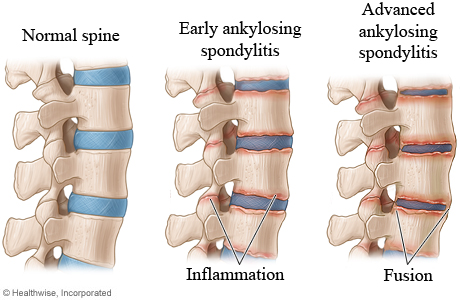Ankylosing Spondsylitis – Symptoms and Treatment

Ankylosing Spondylitis is ankylosing syndromes which is also known as ankyloglossia. This condition is a common disease and has no known cure. It is usually associated with chronic spinal inflammation. The main symptom of this disease is the excruciating pain in the joint.
Spondyles: This is a fibrous cartilage covering, which is the most commonly affected part of a joint. Spondyles are found in several joints such as the hips, knees, shoulders, elbows and feet. Spondyles are usually not damaged due to ankylosed discs. However, chronic inflammation is one of the main factors that lead to the development of spongy tissue, which becomes inflamed and forms into a spiky bump called a sprain. Ankylosclerosis is one of the different causes of sprain.
Pain: Ankylifastitis is a painful disease. It is characterized by inflammation and tenderness of joint tissue in the lower back. Symptoms of ankylifastitis may be caused by the presence of blood in the joint fluid. It can also be caused by infection and arthritis. These causes of pain may persist for weeks or months and eventually go away. If the pain persists for days, it is important to consult a doctor as it may be a sign of osteoarthritis.
Redness: Another symptom of ankylysis is redness. Redness is also associated with ankylosed discs. It may also be due to inflammation of the nerve and other soft tissues such as cartilage, nerves, muscles, bones, and tendons. In case of any pain in the affected area, it is advisable to immediately consult a doctor.
Stiffness: Stiffness can be a sign of ankylosis. It can occur in the lower back, hips, or back. Sometimes the pain is so severe that you cannot move your limbs.
Other symptoms: Other symptoms of this condition include loss of appetite, bowel movements, fever, and excessive urination. Excessive weight loss may also occur. Sometimes you will experience weakness in one or both legs. There may also be discoloration of the skin in the affected area.
Treatment Options: The treatment options for this condition are mostly prescribed by a doctor. One treatment is steroid pills and others include surgery or physical therapy. Medications and surgery include corticosteroids and bursitis relievers. You should avoid physical activity if you have difficulty walking due to pain. Where steroid tablets are prescribed, they are usually taken orally.
Joyo Utomo recommends that if pain persists, medical attention should be sought. Treatment will depend on the severity of the condition. You may be given analgesics such as aspirin, ibuprofen, and other non-steroidal anti-inflammatory drugs. The most effective treatment option may be surgical removal of spinal spurs and fluid buildup in the joints.
Arthritis can cause severe pain and discomfort to the person who suffers from it. In most cases, ankylosing spondylitis is caused by degenerative changes in the cartilage and bones in the spine. As the bone begins to break down, the soft tissues become more brittle and eventually rupture, resulting in a herniated disc. This is one of the main reasons why it is difficult to diagnose and treat. In many cases, disc prolapse is the first sign of ankylosing spondylitis.
At some point the disc to protrude from its location. or slips out of its proper place. When this happens, the pressure of the body on the vertebrae increases and the pain starts to occur. This may cause a lot of pressure on the nerves, muscles, bones and joints. This is how pain develops.
Muscle spasms, increased pressure and lack of proper blood flow may lead to permanent damage to the muscles and the bones. If a muscle becomes stiff or a person is not able to move their muscles properly, then there is a possibility of disability.
If these symptoms are not treated early on, then it may worsen over time. If the patient is overweight, there is a chance of developing complications of the condition. When the joint is inflamed or the joint is painful, then it is better to seek medical advice and treatment. The condition is not curable. However, the early diagnosis and prompt treatment of this condition can mean a lot of improvements.